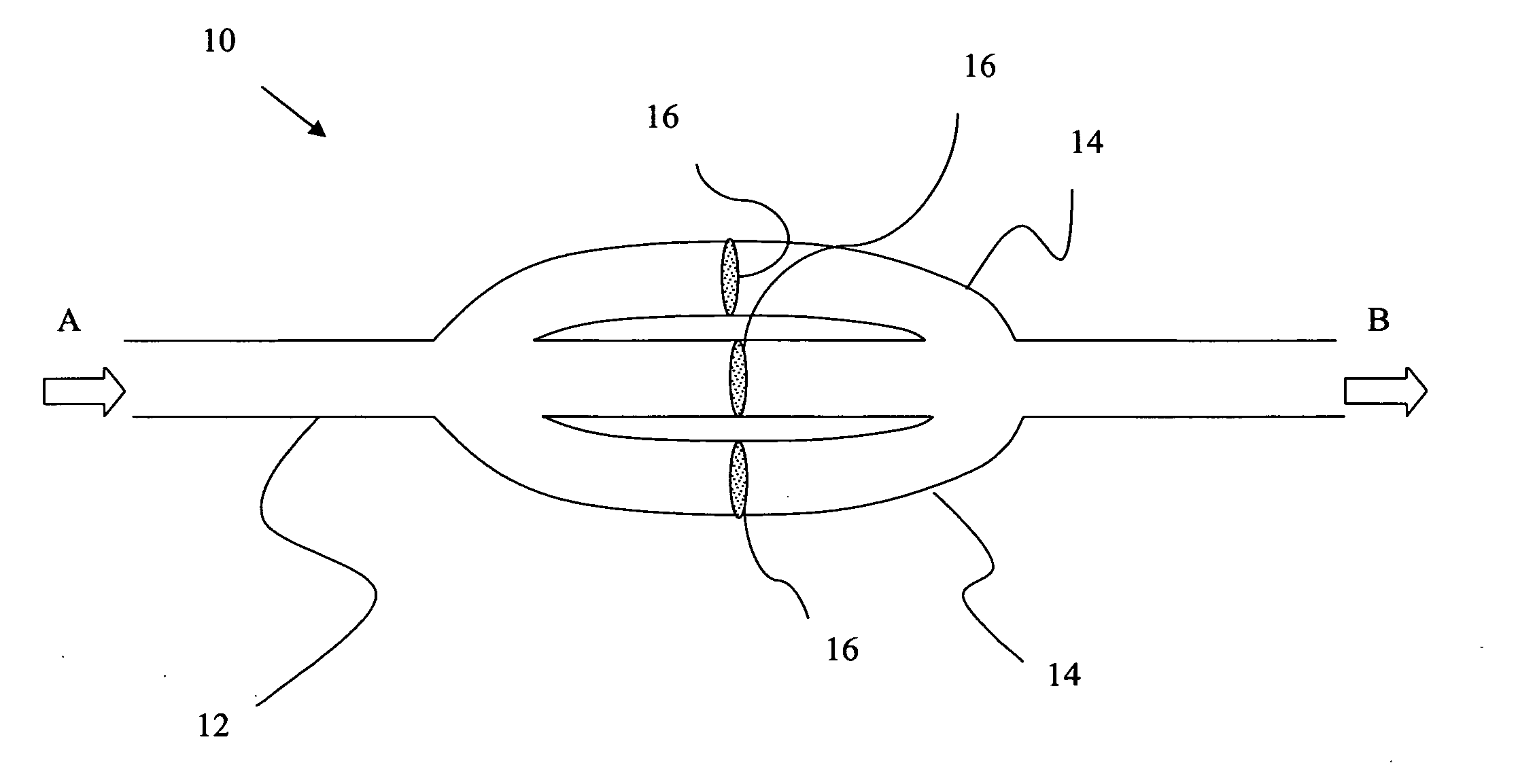Implantable prosthetic device for connection to a fluid flow pathway of a patient
- Summary
- Abstract
- Description
- Claims
- Application Information
AI Technical Summary
Benefits of technology
Problems solved by technology
Method used
Image
Examples
Embodiment Construction
[0023] Strokes result from a sudden loss of brain function caused by a blockage or rupture of a blood vessel to the brain and is often characterized by loss of muscular control, diminution or loss of sensation or consciousness, dizziness, slurred speech, or other symptoms that vary with the extent and severity of the damage to the brain. The implantable prosthetic device, the preferred embodiments of which are herein disclosed and described is designed to decrease the instances of strokes, and other embolic events, such as pulmonary embolisms and ischemia in a patient by providing multiple pathway for the flow of fluids within a patient and a non-invasive method of monitoring the continued proper function of the device.
[0024] In a first embodiment, an implantable vascular prosthesis for connection to the vascular pathway of a patient is provided as depicted in FIG. 1. Vascular prosthesis 10 includes a primary tube structure 12 defined by a proximal end A, a distal end B and a wall ...
PUM
 Login to View More
Login to View More Abstract
Description
Claims
Application Information
 Login to View More
Login to View More - R&D
- Intellectual Property
- Life Sciences
- Materials
- Tech Scout
- Unparalleled Data Quality
- Higher Quality Content
- 60% Fewer Hallucinations
Browse by: Latest US Patents, China's latest patents, Technical Efficacy Thesaurus, Application Domain, Technology Topic, Popular Technical Reports.
© 2025 PatSnap. All rights reserved.Legal|Privacy policy|Modern Slavery Act Transparency Statement|Sitemap|About US| Contact US: help@patsnap.com



